Our view at Stack - Simplify growth with an all-in-one platform. Powerful marketing, sales, and support automation. Integrated CMS. Scalable software. Crafted for customer experience.
I’ve worked in digital marketing and SEO for over a decade. Five years ago, I committed entirely to SEO. I became really passionate about it and have since shared thousands of posts on LinkedIn about all things SEO.
![→ Download Now: SEO Starter Pack [Free Kit]](https://no-cache.hubspot.com/cta/default/53/1d7211ac-7b1b-4405-b940-54b8acedb26e.png)
It was a steep learning curve to cut through the noise and understand the Google ranking factors that actually matter and those that don’t, and now I’m here to share them with you.
Google’s algorithm is vast. There’s a lot that plays into it, and the truth is, none of us knows how the algorithm works in its entirety (yes, even with the “algorithm leak”).
That said, passionate SEOs are testing the algorithm all the time and sharing their exciting findings. I’ve now got years of experience behind me and a portfolio of websites that are generating millions upon millions of clicks.
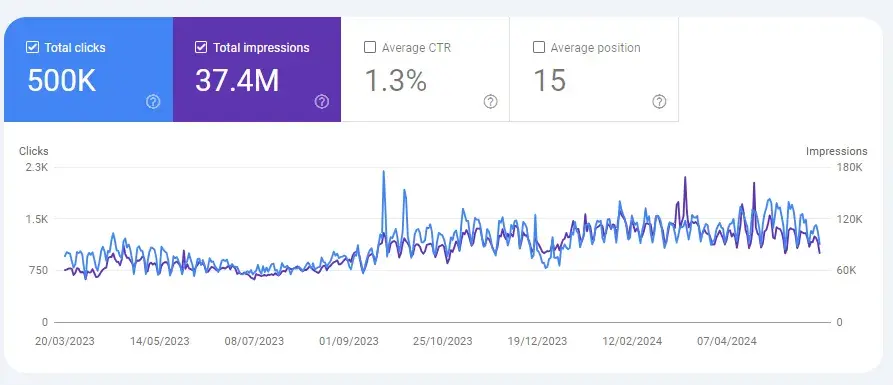
In this article, I’ll share the Google ranking factors that actually matter (starting with the top 10, in my opinion). Throughout, I’ll share SEO experiments and screenshots from Google Search Console to provide some evidence of how my understanding of the ranking factors has helped me.
Oh, and I’ve got quotes and opinions from some of the best SEOs I know, too!
In this article:
- What is a ranking factor on Google?
- Did the algorithm leak teach us anything new?
- Top 10 Google Ranking Factors
- All Currently Known Ranking Factors
What is a ranking factor on Google?
Ranking factors are the criteria Google uses when evaluating pages to decide the best order of relevant results to return for a search query.
Understanding ranking factors is necessary for effective SEO. All marketers, content creators, and SEO strategists should be familiar with them.
This is not because they‘re the end-all, be-all of SEO (they’re not), but because they help create a better user experience, which ensures more leads and conversions for your business.
In recent years, Google has started providing more information about ranking factors and how search works.
HubSpot is making it easy to see how your content is performing on Google with our AI Search Grader microapp. This is one of the first tools on the market that can help you track how your content is performing on AI search engines.
How many Google ranking factors are there?
There are over 200 ranking factors that are generally considered correct (but again, it’s debatable). Since 2006, there have been thousands of algorithm updates including an API leak.
With each update, SEOs test to see what’s changed. So, some of these factors are proven, but others are speculation.
Did the algorithm leak teach us anything new?
There are a few really important things to note about the algorithm leak:
- While thousands of documents were released, we don’t know how much of the algorithm we actually got insights into.
- From the API leak, we can infer that factors are ranking factors, but we don’t really know.
- Although the documentation has been analyzed by some of the best in the industry, we’re relying on their interpretation of the documentation.
- We don’t know how much each factor contributes to the algorithm in terms of weighting.
For the most conscientious SEOs, the leak wasn’t a surprise. Throughout this article, I’ll share significant findings and opinions from the leak and how they might support my considerations about ranking factors.
In my opinion, great SEO is conversely less about algorithms and ranking factors and more about brilliant marketing, providing helpful content to those looking for it. Ultimately, if you work to create the best possible website, in time, you’ll rank.
Let’s look at the top 10 ranking factors and how you can use them to improve your SEO.
Top 10 Google Ranking Factors
Let’s start with the 10 most important ranking factors in my opinion. In this section, I’m sharing 10 factors that I believe have had a direct correlation with my site’s rankings.
These factors made the shortlist because I think they’re effective and a valuable consideration for all websites. Anyone reading this should take these factors seriously.
These are the ranking factors that I believe significantly influenced:
- Improved user experience.
- Optimized conversion rates.
- Perceived trustworthiness.
- Promoted customer retention and loyalty.
- Dramatically increased clicks and impressions and helped bring in high amounts of organic monthly traffic.
Let’s dive in.
1. Helpful, Reliable Content
Google has always emphasized helpful, reliable, and quality content. Providing content that provides value and unique insights not found on every other website can improve your ranking.
With the rise of AI, you’ll be surprised how many websites are categorically failing to create quality content.
There’s good news for those who work hard to craft every word and do their due diligence. You’ll be glad to know that as Google algorithms develop and get smarter, the poor, unhelpful, unreliable content will eventually get penalized or even fall out of Google’s index entirely.
The image below demonstrates how a site with less-than-reliable and helpful content lost the majority of its organic traffic along with the March update.
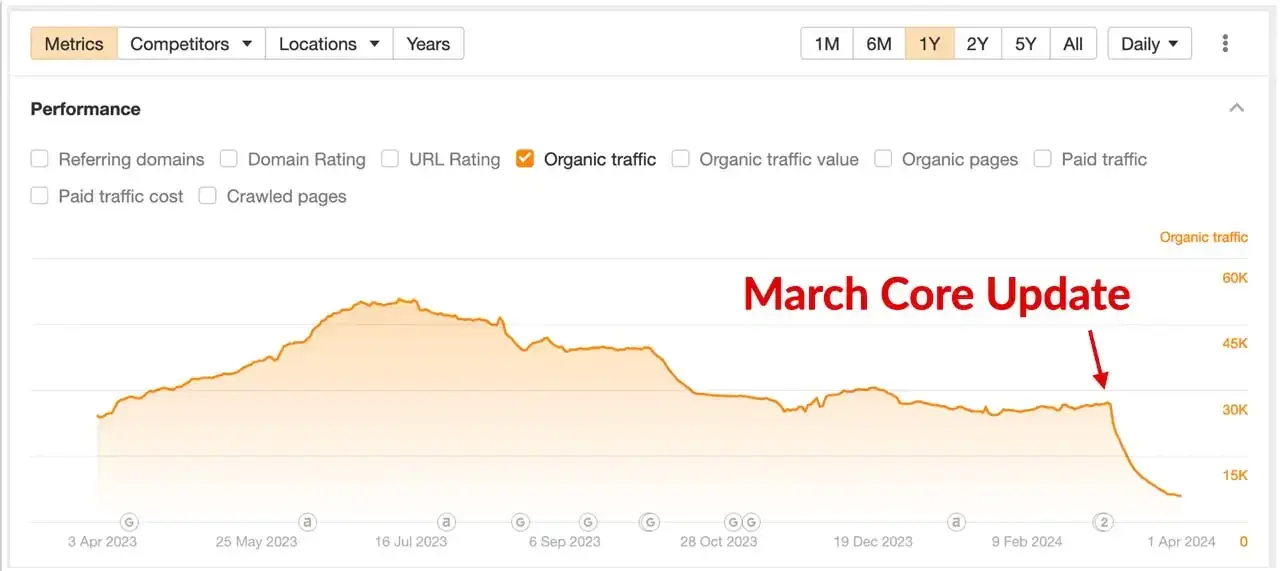
Image Source
How to Create Helpful and Reliable Content
Before I jump into these tips, I want to say that AI content is not inherently bad. You can use AI as part of your content production process, but generally, it’s important to edit it and add your unique insights.
To create helpful content, you want to:
- Ensure you are the subject expert in what you are writing about or that you understand that topic in-depth, according to research.
- Hire subject experts to write your content.
- Provide factual information that informs your audience about the questions that are the most important to them.
- Add links to your research and sources.
- Don’t write fluff.
How to Conduct SERP Analysis
If you want to rank on the first page, stop writing thin content. Research has proven time and time again that content that covers all areas, whether long or short form, tends to do better in search results.
You want to conduct SERP analysis, plus:
- Study your competitors’ content and write about what they missed.
- Cover all relevant areas and answer all questions that readers might have.
- Make the text readable by adding elements like images, a clickable table of contents, jump links, and CTAs to relevant information.
How to Hit the Mark on Content Length
Content length is one thing that several people debate about when it comes to SEO. Some believe an upward of 2,000 words should be the standard. However, this isn’t always the case.
[Embed link: https://x.com/JohnMu/status/1637530426540523522]
Sure, long-form content seems to get the most backlinks, but it’s crucial that you write long-form only when you need that to cover the entire topic.
You might want to check what ranking articles have covered in terms of word count because that can be an indicator of what Google is prioritizing. If all ranking articles have between 2,000-4,000 words and you write 200 words, you will likely not rank high for that term.
Write your content as long as it needs to be without adding fluff.
2. Content Freshness
If you’re ranking well for a desired keyword, you’ll want to maintain that rank by editing content when the time is right.
For conscientious content creators, when you hit publish, the contents of your article are true and correct. But, as things develop, it may be that your content could benefit from an edit to keep it factually accurate and reliable.
I recommend going back to content when you need to make an adjustment and edit it. Don’t edit content for the sake of it or try to game the system by altering publication dates when nothing has changed.
Just be honest and diligent (remember: helpful and reliable).
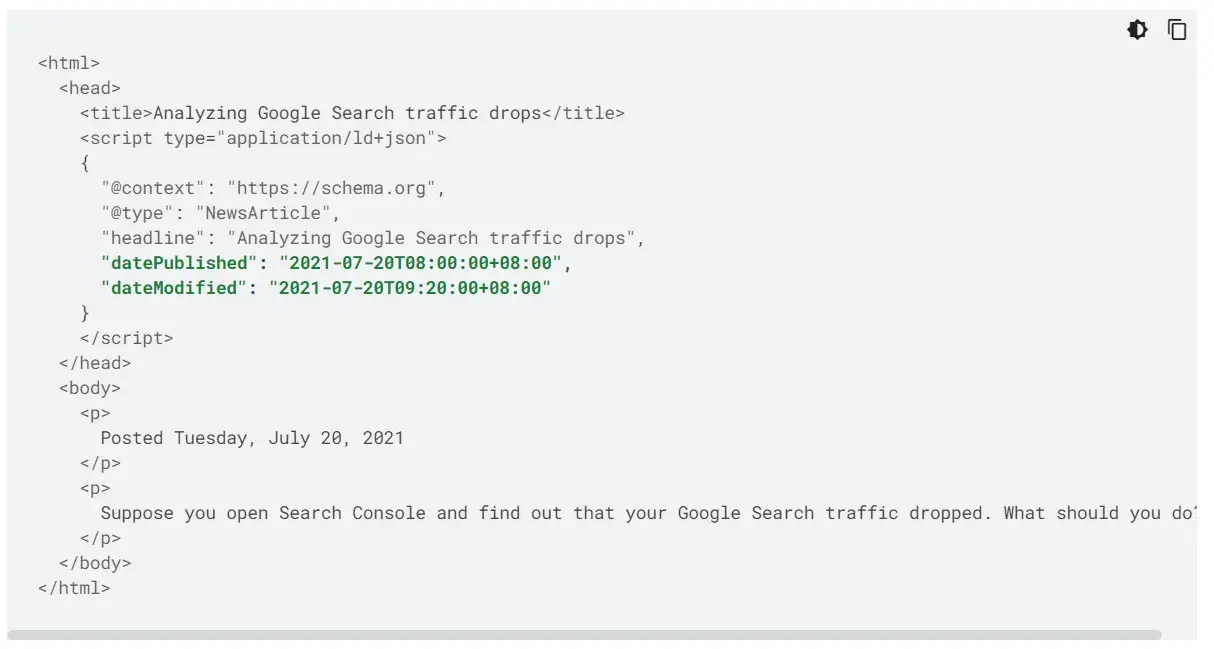
Image Source
As aforementioned, when it comes to SEO and ranking factors, the best thing you can do is provide helpful content for those looking for it.
Using the publication date above as an example, sharing the data from an article that was published (and modified) is genuinely helpful for your user. They will understand whether or not they’re getting updated information.
It’s important to note that in its documentation, Google says, “Add a user-visible date to the page and feature it prominently. Label your dates appropriately with text like ‘Publish’ or ‘Last updated.’”
Be warned: Google doesn’t want content creators to game the system. They have a section titled “Avoid creating search engine-first content.”
It provides the reader with questions to ask to determine whether or not the content is helpful and reliable, the documentation probes the question, “Are you changing the date of pages to make them seem fresh when the content has not substantially changed?”
Marco Genaro Palma, Freelance CMO and SEO Consultant at GenaroPalma.com, shares my feelings on content freshness being a ranking factor. He says, “One key takeaway from the Google leak was the importance of content freshness, evaluated through metrics like ‘byline date,’ ‘syntactic date,’ and ‘semantic date.’
“While I‘ve always advised my clients to keep their content updated, I’m now emphasizing this more than ever.
“Keeping material current and relevant has become crucial. I’ve implemented a rigorous update schedule, encouraging clients to revisit articles and guides to add the latest information and improvements.”
How to Create Fresh Content
To keep your content fresh, I recommend these best practices:
- Edit content when it needs it.
- Be diligent and update published or modified dates. At least add the date to the article; if you have some developer support, add schema as recommended by Google, too.
- Keep on top of trending topics within your niche.
3. Author Bylines
I strongly believe that articles should have assigned bylined authors. Author bylines are useful for readers, as they help them see who wrote the article, which can help build trust.
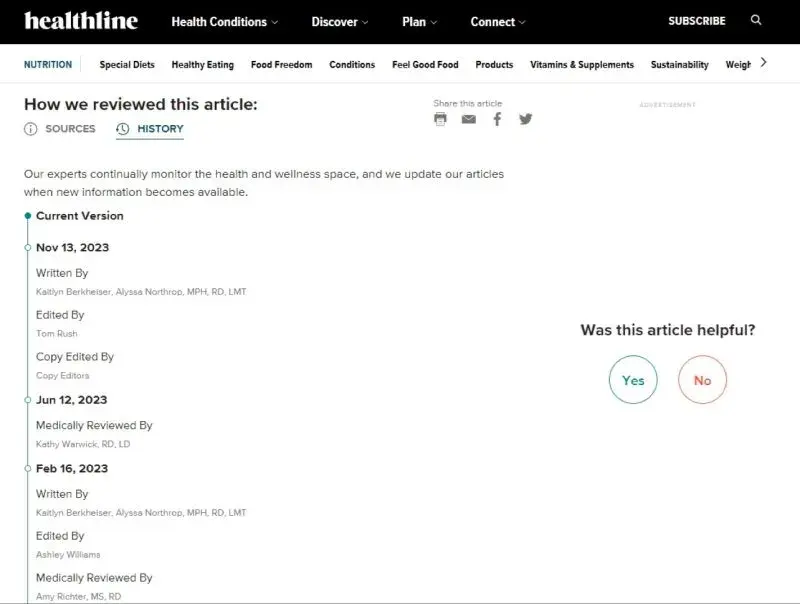
Image Source
While authors help people understand that an article was written by a credible source, some evidence suggests that Google also considers authorship a ranking factor.
First, Google Search Central suggests that the authority of the content creator is important. Google Search Content suggests that articles should have:
- Author bylines where users might expect it.
- Evidence of who created content.
- Linkable bylines leading to author pages with further details.

Image Source
It’s worth me saying, for balance, that authors are not completely necessary for ranking, and neither is any factor in isolation, to be honest! Author-less pages rank well in many cases. I wrote a bit about that in my piece on E-E-A-T for SEOs.
Second, I have some anecdotal evidence that authors are useful for ranking. On one site, in particular, my client and I were struggling to rank a cluster of content.
We’d written eight to twelve articles on a topic, all written by an industry expert.
Every piece of content was well-researched, cited, and in-depth, and all my best SEO tactics were in place, but nothing was happening.
We decided to add author functionality to the site in the form of a byline and schema.
Days after the schema went live, the articles gained traction in the SERPs. After six months, clicks increased from 94 to 3,250 (+3,357%).
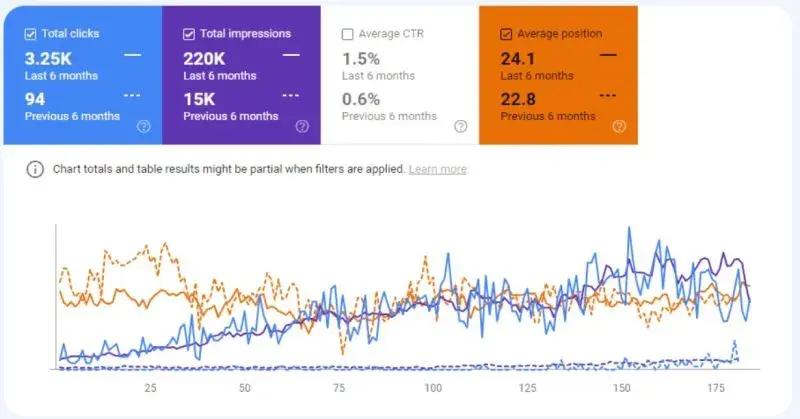
Other SEOs have found author bylines and schema to be effective.
James Oliver, Founder at Oliver.com, says, “Google values and stores information on content creators and website owners, using Boolean ‘isPublisher’ and ‘isAuthor’ features. This suggests Google may use this data to assess expertise and authoritativeness, aligning with E-E-A-T principles.”
Oliver continues, “[It’s implied] that Google‘s ability to identify these entities could significantly impact a site’s credibility, underscoring the importance of clear authorship and publisher information for SEO success.”
How to Add Author Bylines
To add author bylines, follow these steps:
- Simply add an author byline to your articles.
- Understand that crediting “company team” as an author isn’t useful. Instead, use full names.
- Take it a step further and include an author schema if you can.
- Create detailed author pages to link to from the article byline. Here’s mine on HubSpot.
4. Internal Linking
Internal linking is my favorite SEO tactic. I just love how simple but impactful it is.
Internal links are simply inline links like this one: A link that goes from one page on your website to another link on your website.
If you link to a site that isn’t yours (read: a site on another domain), that’s an external link.
Internal links are powerful for SEO. They’re incredibly useful for Google, and most importantly, they’re useful for users.
By linking from one page to another, you’re helping users (and Google bots) discover and move around your website. A click from one page to another is a sign of engagement, and you’re likely taking your reader through a journey of your amazing content.
Rebekah May, SEO and Content Marketing Expert at MarketingAid.io, is paying attention to engagement factors like internal linking.
May says, “I’ll increase my focus on optimizing for on-site user engagement metrics and click-through rates from search. This involves testing titles and descriptions, improving content formatting, internal linking, and incorporating more multimedia to maximize CTR and time on page.”
Internal links help Google discover and index your content. The bots follow from one page on one subject and find other high-quality, related content. You start to look like you know a thing or two about what you say you do, and Google starts to trust and rank your website.
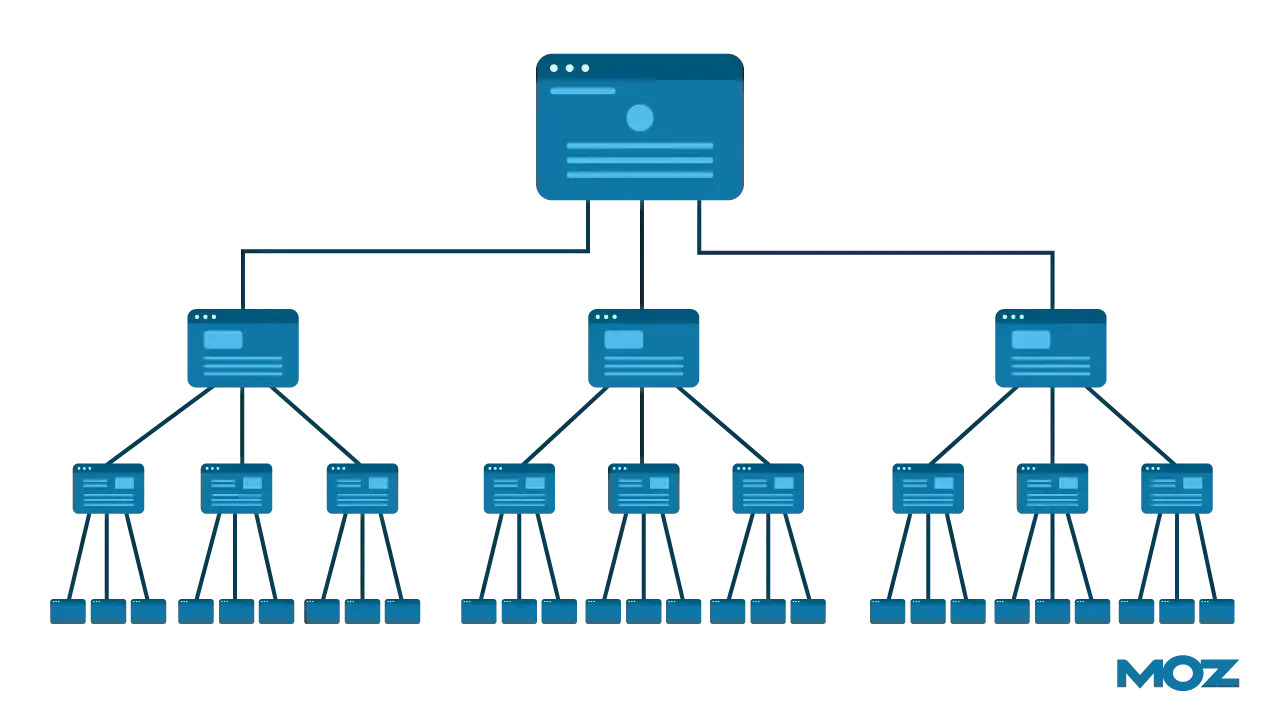
Image Source
How to Use Internal Links
Here are some tips on how to incorporate internal linking:
- Use links naturally.
- Link relevant content pages together.
- Add a “you may also like” section to the bottom of articles.
5. Keyword Placements
Google is getting smarter every day, but using your keywords wisely will give you the best chance of ranking.
Before I share where to use your keywords, there’s one thing to note: A natural-reading article is more important than keyword placements.
Most pages on your website should have an assigned focus keyword and supporting keywords.
Generally, you will use your assigned focus keyword in the:
- Page’s H1 (usually the title).
- URL.
- H2s, and maybe H3s, where natural.
- Body text, where natural, and ideally in the first paragraph if it makes sense.
The H1 is an indication of what your content is about. So, include your keyword in your H1. Be careful, though; some SEOs say that using the same sentence in your H1 and meta title is an indication that you are keyword stuffing.
You might want to spice it up a bit while still ensuring that your keyword is present. Do this in combination with all on-page optimization (metadata, URL, other headings).
I like to keep track of my focus keywords in a spreadsheet. Here’s what it looks like:
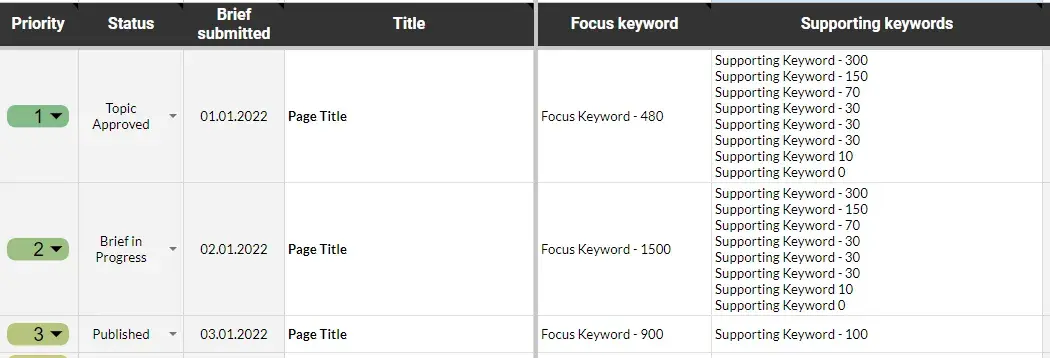
On the subject of keyword placements, it’s really important that I remind you that writing content just to rank keywords isn’t ideal. Your content should be high-quality and person-focused, not keyword-focused, but of course, keywords are ultimately what people search.
Fellow SEO Praveen Kumar, Founder at Wild Creek Web Studio, said it best: “[good content] satisfies the user-intent queries along with being in-depth and experience-driven rather than just keyword-focused…One well-written piece of content can get the audience to keep coming back for more as it helps to build trust and credibility.”
6. Quality Backlinks
Backlinks are a controversial topic in SEO. Many SEOs believe that they are a ranking factor, while others say they are not.
The confusion is not surprising when you consider the somewhat mixed messages that come from Google.
Sometimes, we hear that links are becoming less important. On a podcast, John Mueller said, “Over time, the weight on the links will drop off a little bit as we can’t figure out a little bit better how the content fits in within the context of the whole web.”
<iframe title=“Libsyn Player” style=“border: none” src="//html5-player.libsyn.com/embed/episode/id/24887220/height/90/theme/custom/thumbnail/yes/direction/forward/render-playlist/no/custom-color/ececec/“ height=”90“ width=”100%“ scrolling=”no” allowfullscreen webkitallowfullscreen mozallowfullscreen oallowfullscreen msallowfullscreen>
However, other important documents suggest that links are important.
In Google’s How Search Works content, it says, “One of several factors that we use to help determine this is understanding if other prominent websites link or refer to the content.”
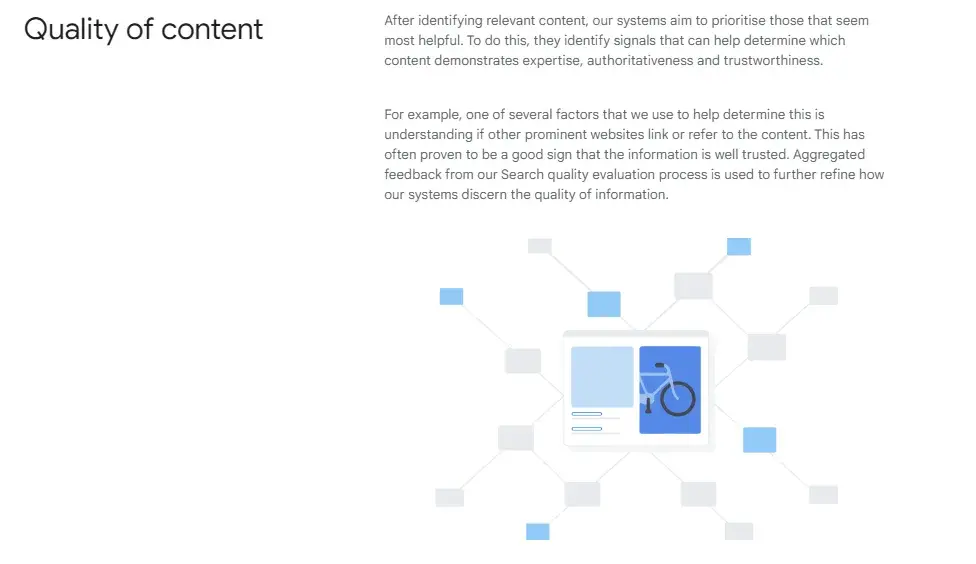
Image Source
When it comes to topical authority and news, we know that Google also factors in links. “If other prominent websites link or refer to the content.”
This is important because it suggests that low-quality links won’t get you anywhere. Instead, you should focus your efforts on earning your links honestly from credible sources in your industry.
How to Use Backlinks
- Write great content that earns links organically (remember from earlier: in-depth content naturally earns more links).
- Earn your links from PR.
- Don’t pay for links from spammy or irrelevant sites.
The total number of your backlinks and referring domains are important, but only when they are from relevant sources. In February 2021, John Mueller commented about the importance of link relevance and that you can build many backlinks, but Google will ignore them if they are not relevant.
Rather than focusing on building millions of backlinks, focus on more relevant and quality backlinks.
Leigh McKenzie, community advocate at Traffic Think Tank, wasn’t surprised when backlinks appeared to be a ranking factor according to the API leak.
McKenzie said, “I’m personally locked in on its backlink findings. Particularly, that backlink profile quality matters way more than quantity when it comes to rewarding your site.”
McKenzie notes that this shouldn’t be a shock to anyone who takes SEO seriously, but having it spelled out so clearly is telling.
According to McKenzie, some folks, especially if their site is younger, still see link building as a numbers game. The leak only emphasizes that receiving dofollow backlinks from a handful of high-DA, authoritative websites moves the needle way more than fishing for any link.
“These quality sites give Google’s algorithms a nod of approval back to your own website, with ranking and organic traffic positively influenced accordingly,” McKenzie says.
McKenzie says her team was already focusing on white-hat link-building tactics, but the leak further emphasizes that work.
“We’re funneling more team time and strategy into earned guest posting on third-party sites with a high relevance match to our audience, reclaiming link schemes, intentional and SEO-guided blogger outreach, and converting site mentions into dofollows,” McKenzie says.
7. Website Domain Authority
On the subject of backlinks comes Domain Authority (DA).
Let me get this straight: It’s not a ranking factor, despite what many say, and the simple reason is that Google didn’t create it. When asked if it was a signal, John Mueller replied, “It’s a tool by Moz.”

Image Source
But from my perspective, it’s good to keep in mind because Moz uses particular signals to create that score (and other tools like SEMrush and Arel=“ noopener” target=“_blank” hrefs) that are similar to Google’s ranking factors.
When more trusted sites are linking to yours, and you have content that ranks well, that is an indicator that you should be trusted, which in turn increases your rankings even further — all of which plays into DA.
I still use Domain Authority. When I’m thinking about a site and whether or not I can rank for a desired keyword, I use Domain Authority to help me decide if it’s possible.
For example, if I want to rank for a keyword like “Google ranking factors,” I might Google it and check the authority of the site’s ranking. In the screenshot below, we can see that the top three articles have a Moz Domain Authority of 45 to 74.
HubSpot has a domain authority of 93, so I’d say it has a good chance of making the top spots for this keyword. My agency website, with a domain authority of 20, has a low chance of making the top spots.
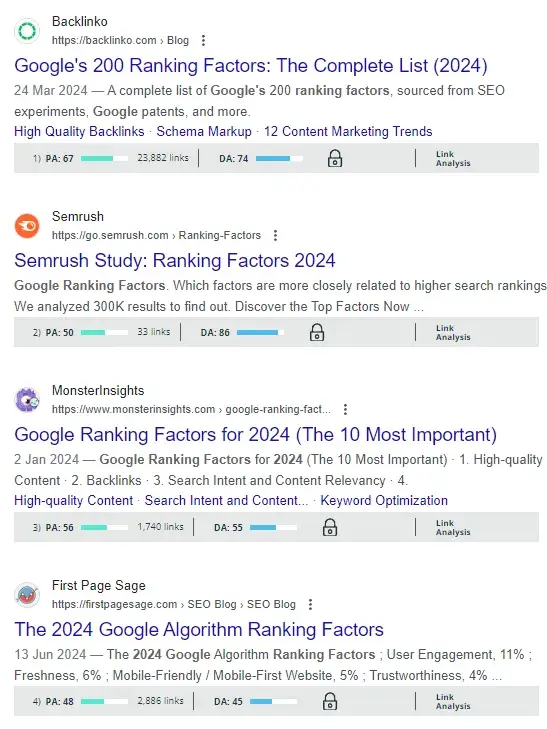
All this said, domain authority should never put you off your keyword strategy. In fact, for less competitive SERPs, even a site with a very low domain authority can rank plenty well enough! I’ve got a brand new blog with a domain authority of two, ranking on page one for carefully selected keywords.
James Taylor, SEO strategist at Embryo, understands the nuance of using domain authority as an indicator of your website’s ranking potential. Taylor says, “Despite what has been said over the last 12 months, link building is still a core aspect of the algorithm, and site authority is a very real thing.”
This doesn‘t mean that you can work off estimated domain authority alone, Taylor notes. “However, it’s certainly a factor when considering your link-building strategies and justifies long-term link-building as a means of developing the authority and level of trust for your own website over time,” says Taylor.
8. Branding
I’ve covered the value of branding and SEO before. Branding, specifically site mentions, stirred discussion within the SEO community after the Google algorithm leak.
Paul Friend, head of SEO at The SEO Works, explains the role of branding and the leak. Friend says, “The importance of brand for SEO was strongly implied by the fallout of Google’s Helpful Content Update, and the leaked API documentation seems to reinforce this as a key consideration for continued ranking success with Google.”
Friend says that Google’s documents bring into focus the importance create a compelling offer and a strong brand in your niche, even if a lot of this work is done primarily outside of Google’s organic search ecosystem.
“One clear example of brand-related activity that all SEOs should focus on is sourcing brand mentions and links from sites that will send real users your way.
Earning real mentions, coverage, and links because your business is being legitimately talked about by relevant, industry-specific publications and other businesses in your niche seems to be the key, at least until the next leak!” Friend says.
Chris Kirksey, CEO at Direction.com, shares the same sentiments as me and Friend. Kirksey says, “The leak confirmed what I always suspected: building a brand and getting it mentioned, clicked, and searched boosts search engine success.”
Kirksey says he now puts more of a focus on educating clients about brand building and implementing strategies to increase Entity Mentions. These include:
- Helping clients earn expert quotes and mentions by answering publisher questions.
- Encouraging user-generated content that naturally includes brand mentions, like on Reddit.
- Using PR and media relations to secure mentions in news articles and industry blogs.
- Optimizing websites with relevant entities to establish associations in the Knowledge Graph.
“The leak shows that SEO success is not just about backlinks but also about anchor texts, relevancy, mentions, and their quality. By prioritizing Entity Mentions, we’re further helping clients build authority, relevance, and search visibility — in other words, their brand and their success in organic search,” Kirksey says.
How You Can Get Your Brand Mentioned
- Get cited in industry publications.
- Engage a great PR team.
- Use brilliant tools like Featured, HARO, or Qwoted.
I’ve used Featured to pitch for opportunities to get mentioned and linked to my website, and I’ve had a 55% success rate. I highly recommend it!
9. Website Architecture and Crawlability
How well your site is built will impact how easily Google can crawl it and how easily users can explore it.
A poor site architecture will result in a poor experience for users.
Peter Rota is an SEO I respect on LinkedIn. He is the Senior Technical SEO Manager at Peter Rota SEO and values the importance of a well-built site.
Rota says, “I‘ve always focused on making a site easy to crawl for Google, having it well-organized, easy to use, and not wasting the user’s time by getting straight to the info.”
Ben Poulton, founder of Intellar SEO Consultancy, shares Rota’s enthusiasm for a site that’s easy to use.
Poulton says, “With clicks and dwell time being factors, this means SEOs need to really think about how intuitive a website’s structure and navigation is. You want a website to be usable but also offer easy discovery paths for crawling bots.”
Interestingly, site architecture and crawlability are factors that have crossover with other ranking factors, engagement, and internal links, for example.
When I work on a new site, I nearly always look at the site architecture first. Site architecture relates strongly to internal linking, but I think it deserves a separate point here as a top 10 ranking factor because it considers the site a bit more holistically (the navigation, the footer, etc.).
My favorite way to see site architecture is with Screaming Frog’s visualization tools. I actually prefer the 2D version but the 3D one looks cool.
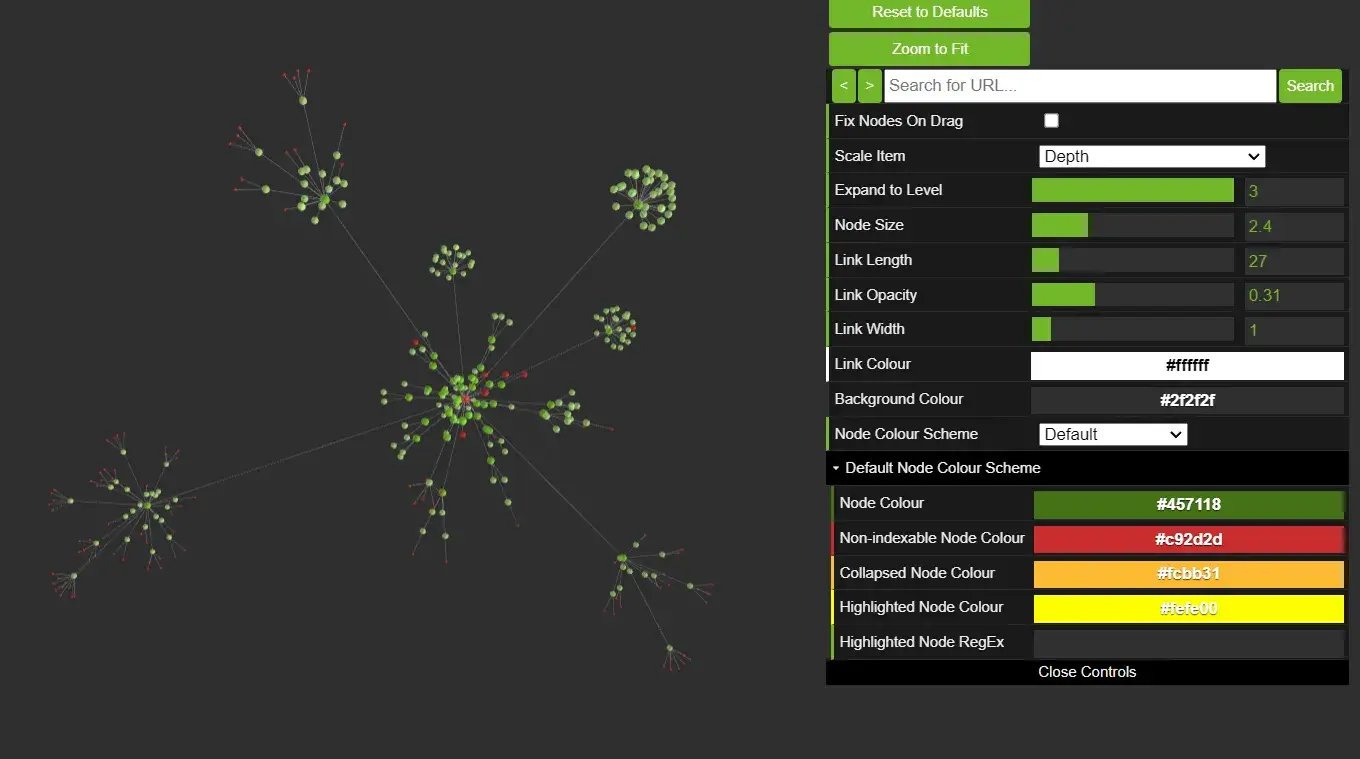
I use this tool to audit the site’s pages. I can then see if Screaming Frog picks up on pages and how the tool “understands” the site architecture.
Looking at site architecture using Screaming Frog allows me to see how a site is “put together.” Screaming Frog mimics Google crawling and provides insights into problems. I recently found a site that was crawling infinitely due to a code bug.
While this issue was an invisible problem for users, their website had 6,940 blank and useless pages indexed.
How to Think About Website Architecture and Crawlability
This one is a bit more technical, but there are some things you can do:
- Use your robots.txt file to prevent search engines from crawling unhelpful pages.
- Keep your sitemap updated.
- Follow best practices and make sure your navigation is logical.
10. Accessibility and Page Speed
Website accessibility and page speed are always tough for me.
I want to include them here because I think they’re really important, especially the accessibility element. But they’re not really one ranking factor; they’re basically an umbrella term for many.
When we talk about accessibility, a lot of SEOs will think about the value of alt text, and this does weigh in, but there’s a lot more to it than that.
Accessibility covers a range of factors, such as providing text alternatives for non-text content, using appropriate heading structures, and ensuring that color contrasts meet readability standards.
Your site should be available for all people to use. All of my sites have high accessibility scores.
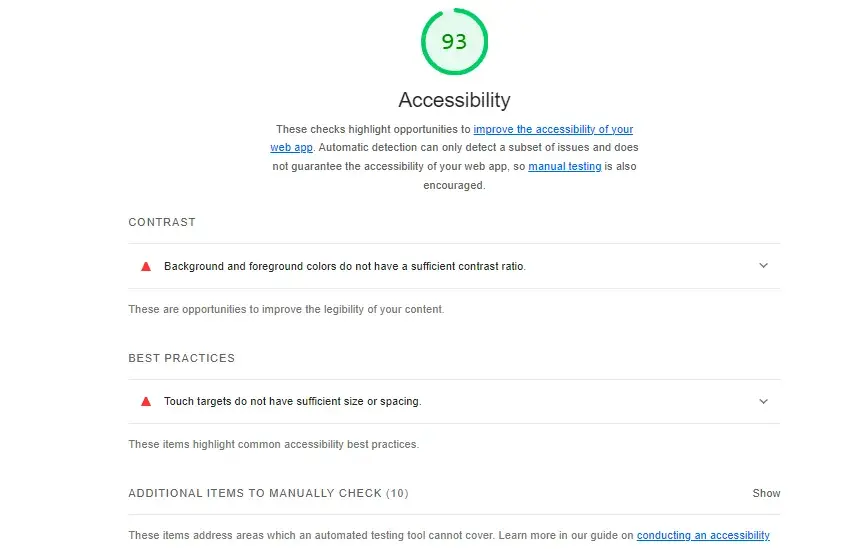
How to Implement Best-in-Class Accessibility and Page Speed
You’ll likely need a developer for this one. Google Lighthouse is a free tool that can help you find accessibility and page speed issues.
Go to any site, click F12, navigate to Lighthouse, and the report will be generated for you. A developer should be able to understand the report, which will tell you what needs fixing and how to do it.
- Use Lighthouse to identify issues.
- Have a developer resolve as many problems as you can.
- Some problems will be very difficult to resolve, as in, will require a rebuild of your website, so start with tasks that are a) quick to do or b) the heavy hitters in terms of improvements.
Finally, mobile usability. No one’s building sites that aren’t mobile-friendly anymore, right? User experience is key for SEO success and users are increasingly accessing your website via mobile. If you want to score points with Google and, more importantly, your users, work on your mobile usability.
Some B2B companies might find that the majority of visitors are using desktops, but B2C brands are likely to have a high mobile or tablet usage. You can use G4 to determine which devices people are viewing your website on.
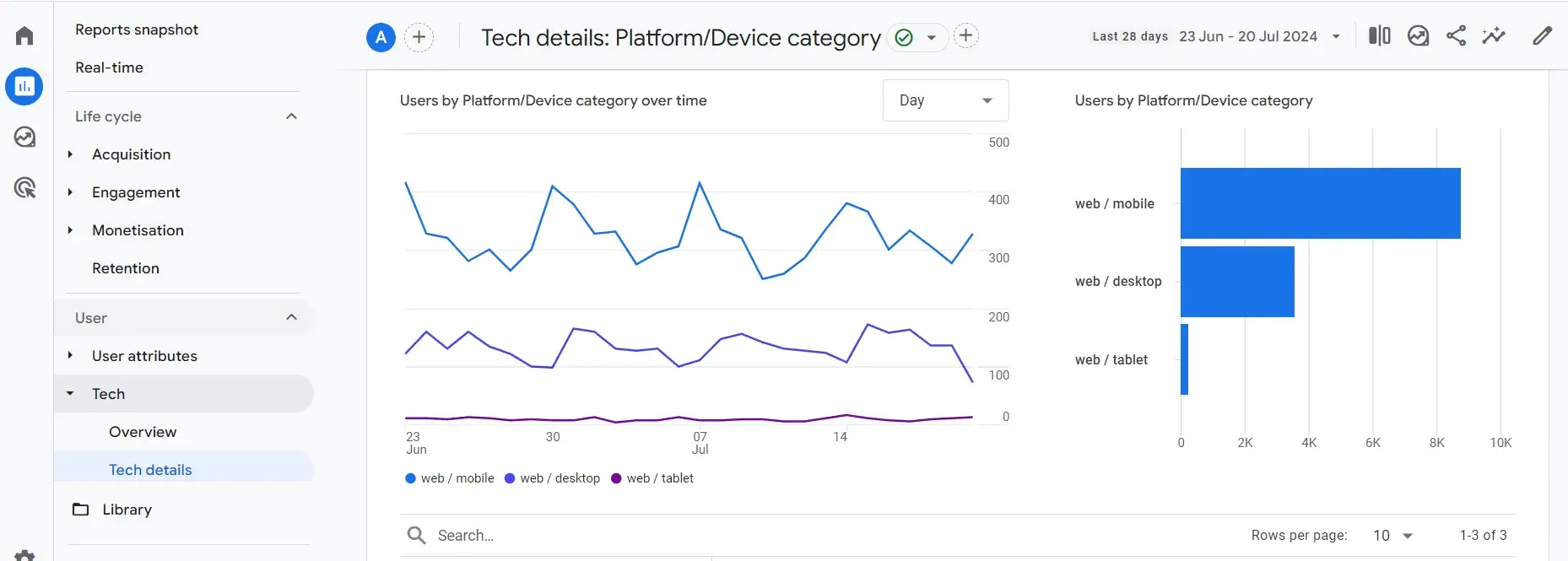
All Currently Known Ranking Factors
Now that we’ve covered the most important ranking factors in detail, it’s time for the fun part: Getting into the rundown of all 200 ranking factors.
Here are the top categories:
- Domain Factors
- Page-Level Factors
- Site-Level Factors
- Backlink Factors
- User Interaction
- Special Google Algorithm Rules
- Brand Signals
- On-Site Webspam Factors
- Off-Site Webspam Factors
Domain Factors
Domain factors are all ranking factors that connect with your domain (the basic example.com version of your website), including the following.
1. Your domain age is the length of time that your domain name has been registered. I’ve ranked very new domains at the top of Google, so I don’t think this is super impactful, but I suspect it plays a role.
2. Keyword in your domain: Having a target keyword within your domain name.
3. Keyword is the first word in your domain: Having a target keyword as the first word in your domain name.
4. Domain registration length: The period for which your domain is registered.
5. Keyword in subdomain: Including a target keyword in the subdomain part of your website URL.
6. Domain history: The past ownership and usage records of a domain. I had issues with this when I bought my domain!
7. Penalized WhoIs owner: A domain owner with a history of search engine penalties.
8. Public WhoIs instead of private WhoIs: Using public WHOIS information, making domain ownership details visible.

Image Source
Page-Level Factors
Page-level factors are factors on each page that you can optimize, such as the following.
1. Presence of the keyword in the title tag: Including the target keyword in the web page’s title.
2. Having the keyword at the beginning of your title tag: Placing the target keyword at the start of the web page’s title.
3. Presence of the keyword in the H1 tag: Including the target keyword in the main heading of the web page.
4. Keyword is frequently used in the content: Using the target keyword throughout the content. Remember to be very natural about this.
5. Content length: The total number of words in the content. HubSpot found that the ideal word count for SEO and articles was 2,100 to 2,400 words. But the ideal length for leads was 2,500 words. I suggest you write naturally and make your pages as long as they need to be.
6. Word count rankings: The relationship between word count and how well a page ranks in search results.
7. Presence of a linked table of contents: Having a table of contents with links to sections within the content. I always do this; it makes the article more navigable for users so it feels like a great feature to add.
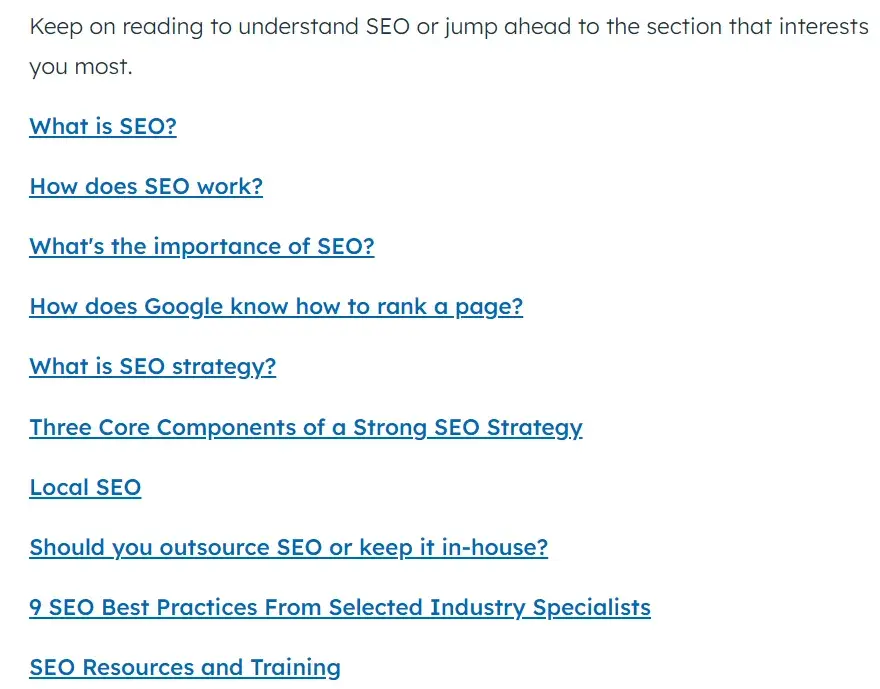
8. Keyword density: The percentage of times the target keyword appears in the content relative to the total word count. Keyword density may factor in, but I imagine it’s less important than it used to be. Keyword density garnered some controversy when Google mentioned it in their course for SEO beginners.
9. Presence of semantically related keywords: Including keywords that are contextually related to the main keyword. Most good writers will include semantic keywords naturally.
10. Semantically related keywords in meta title and description: This includes related keywords in the meta title and description tags.
11. In-depth quality content: Providing thorough and comprehensive information on the topic.
12. Useful content: Creating content that provides value and practical information to the user.
13. Page loading speed via HTML: The speed at which a web page loads as measured by its HTML performance.
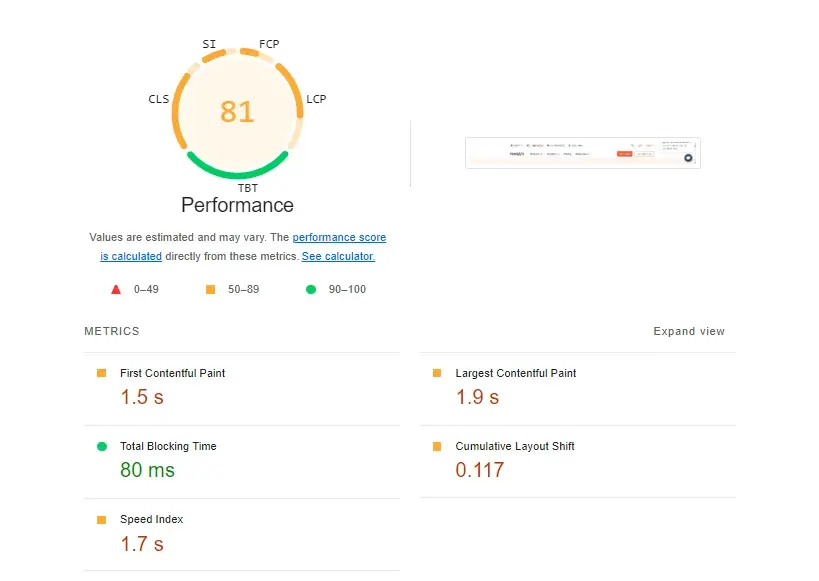
14. Page loading speed tested on Chrome: The speed at which a web page loads when tested using the Chrome browser. I like to think of page loading speed as a tie-breaker, but I have some anecdotal evidence of a website zooming to the top of Google after we did page speed work! My general rule is that if a site feels fast enough, it probably is.
15. Core web vitals: Key metrics that measure the overall user experience of a web page, including loading, interactivity, and visual stability. You can find your CWV data in Google Search Console.
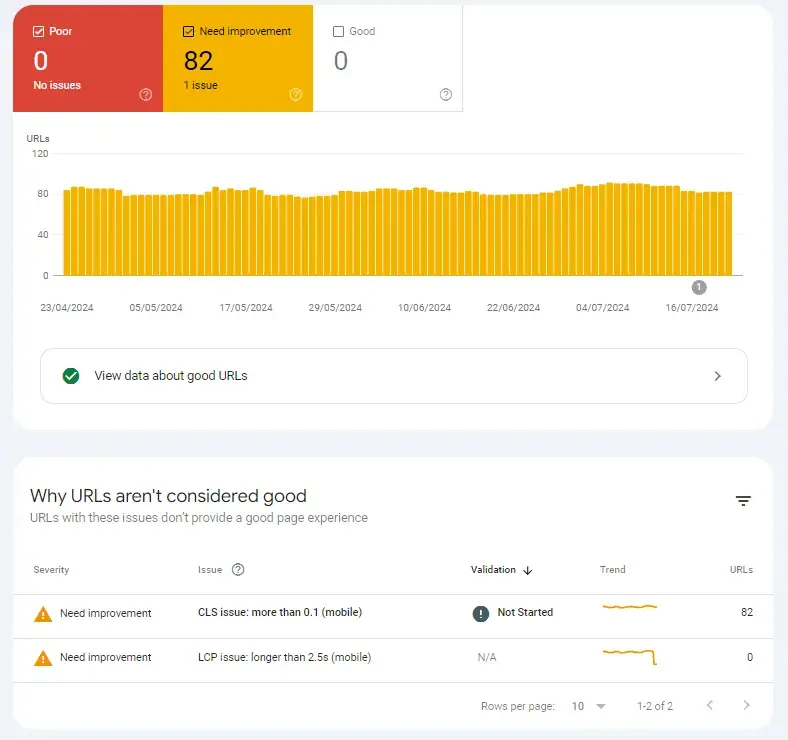
16. No duplicate content on the same site: Ensuring that content is unique and not repeated elsewhere on the same website. Some duplicate content is okay, in my opinion, but try not to over-do it. Never have content from another site without citing it, or using canonicals, though!
17. Image optimization through ALT, title, and file name: Improving images for SEO by using descriptive ALT text, titles, and file names. Image optimization also has some page speed benefits.
18. Content recency (the newer, the better): The freshness of the content, with newer content being preferred. This is a big one for me!
19. Page age: How long the web page has been published.
20. How many edits were made to the content during updates: The number of changes made to the content over time.
21. Historical data on page updates: Records of when and how often the page has been updated.
22. Proper use of rel=canonical: Using the rel=canonical tag to indicate the preferred version of a web page to avoid duplicate content issues.
23. Presence of keyword in H2 and H3 tags: Including the target keyword in subheadings (H2 and H3 tags) of the content.
24. Presence of keyword in the first 100 words: Using the target keyword within the first 100 words of the content. Generally, I do try to do this. I want to see the keyword in the first paragraph or two.
25. Grammar and spelling: Ensuring the content is free from grammatical and spelling errors. Top tip for grammar and spelling, you can crawl for grammatical and spelling errors using Screaming Frog!
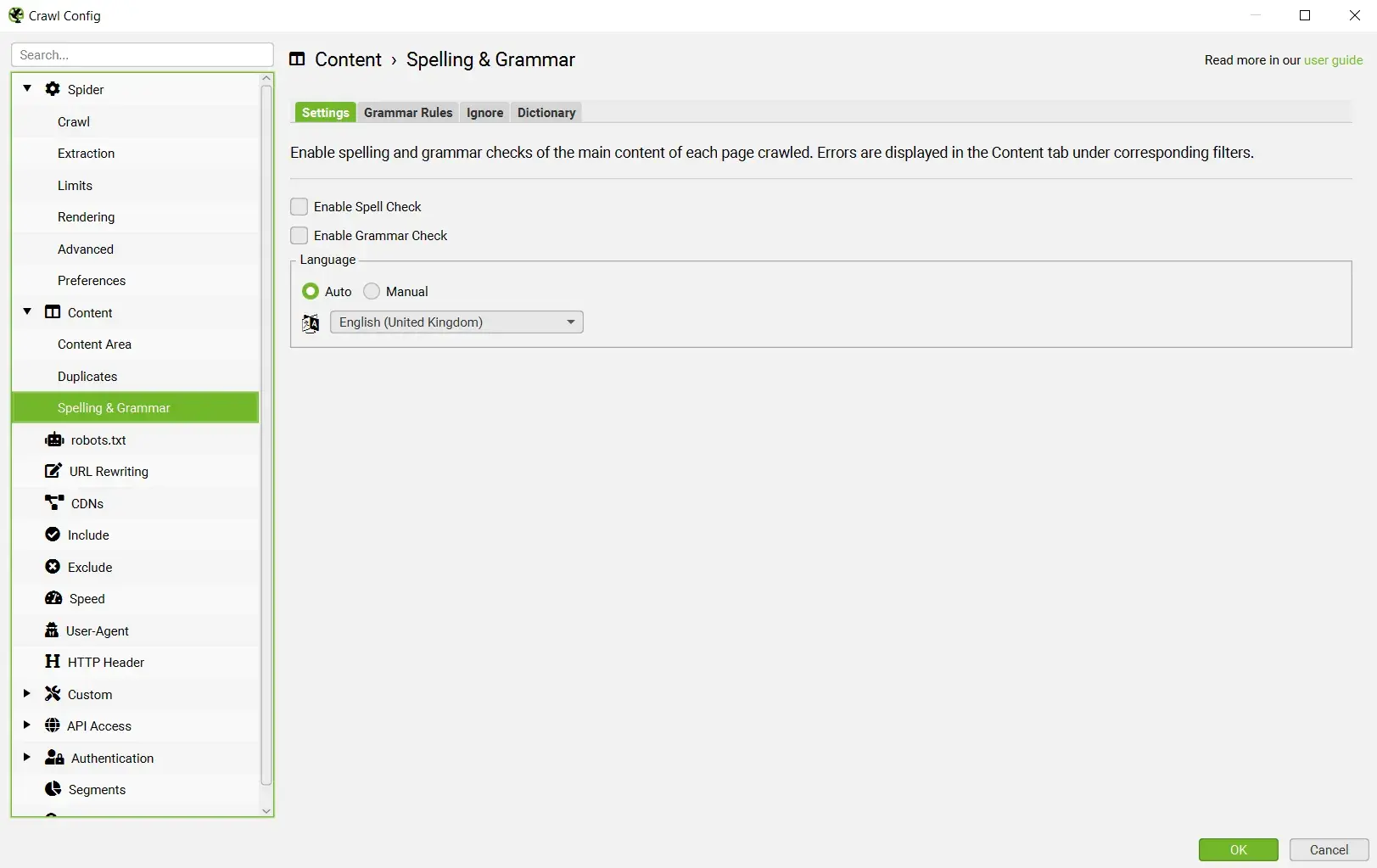
26. Originality of the page’s content: Ensuring the content is unique and not copied from other sources.
27. Entity match: Including relevant entities (people, places, things) that match the topic of the content.
28. Mobile usability and optimization: Ensuring the web page is easy to use and navigate on mobile devices.
29. Hidden content on mobile (may not be indexed): Content that is hidden on mobile devices might not be indexed by search engines.
30. Page optimized for mobile: Ensuring the web page performs well on mobile devices, including fast loading times and responsive design.
31. Presence of multimedia, for example, images and videos: Including various types of media like images, videos, and infographics in the content.
32. Number of outbound links: The count of links from your page to other websites.
33. The quality of outbound links: Ensuring the external links point to reputable and relevant sites.
34. Theme of outbound links: Ensuring the outbound links are relevant to the content’s topic.
35. Presence of helpful supplementary content, like free tools and calculators: Including additional resources such as tools, calculators, and guides that provide extra value.
36. Number of internal links pointing to the page: The count of links from other pages on your site to the page in question.
37. Quality of the internal links: Ensuring internal links come from high-quality and relevant pages within your site.
38. Presence of too many broken links (could lower ranking capabilities): Having too many non-functional links on your page can negatively impact its ranking. It’s not good for users to click a link and not be able to access the content.
39. The reading level of the page: The complexity of the language used in the content, aimed at a specific audience’s comprehension level. The Hemingway App is a great way to check the “grade” of your site. Bear in mind, not all sites need to write to the same grade. It depends on the audience.
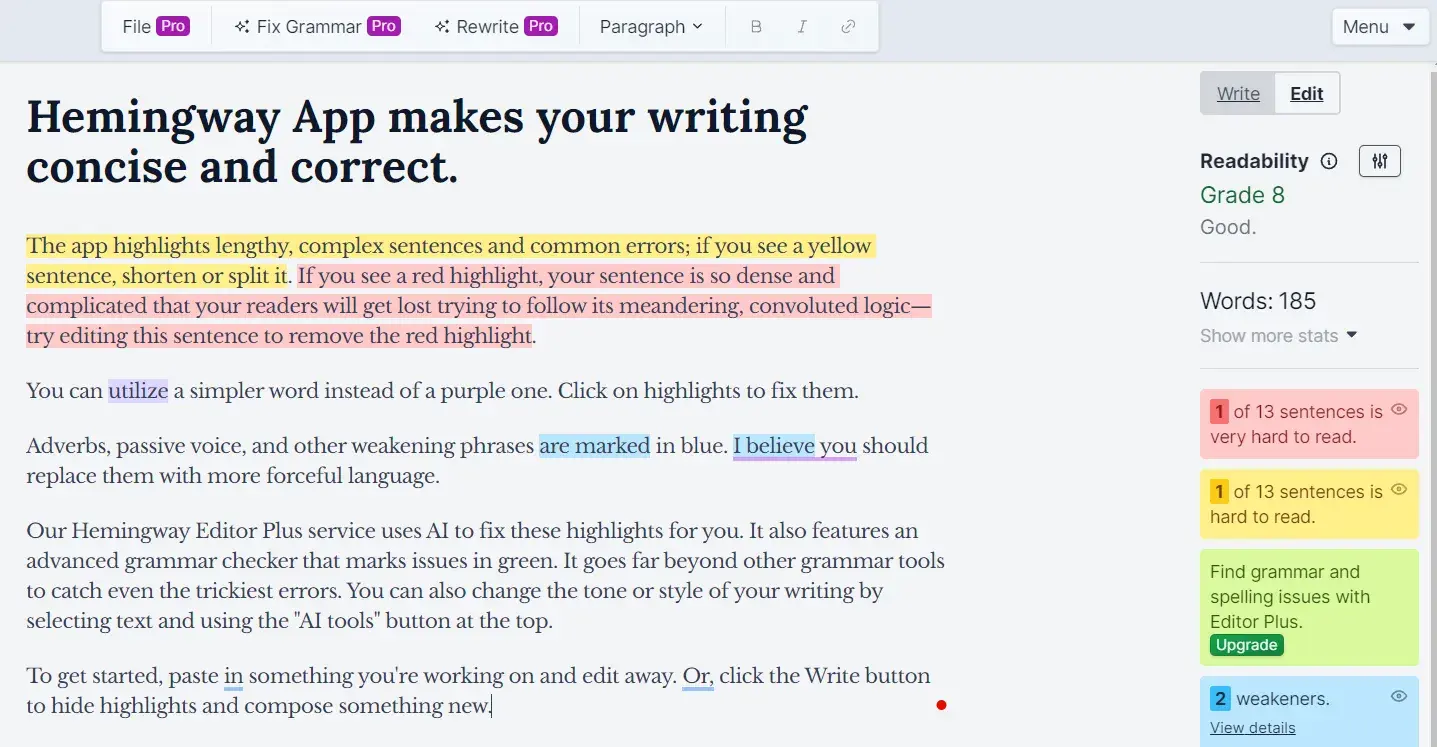
Image Source
40. Presence of many affiliate links: Having a significant number of affiliate links, which might affect the page’s credibility and user experience. A lot of affiliate sites felt the impact of the March update.
41. Presence of many HTML errors: Having multiple coding errors in the HTML of your page, which can affect performance and SEO.
42. Authority/trust level of the domain: The overall credibility and trustworthiness of your website’s domain.
43. Authority/trust level of the page: The credibility and trustworthiness of a specific web page, often influenced by backlinks and content quality.
44. PageRank: A Google algorithm metric that evaluates the importance of a web page based on the quality and quantity of its backlinks.
45. Length of URL: The total number of characters in a web page’s URL, with shorter URLs often being preferred. Try to avoid spammy-looking URLs — a lot of irrelevant numbers, for example.
46. Closeness of URL to the homepage: The proximity of the web page to the homepage within the site’s URL structure. Good site structure resolves this.
47. Presence of keyword in URL: Including the target keyword in the web page’s URL.
48. Opinion of human editors: The subjective evaluation of a web page’s quality by human reviewers. There is a team of real human editors who rate sites according to Google’s rater guidelines.
49. Relevance of page’s category to page: Ensuring the page is categorized in a relevant section of the website.
50. Content formatting for user-friendliness and readability: Structuring content with headings, bullet points, and short paragraphs to enhance readability.
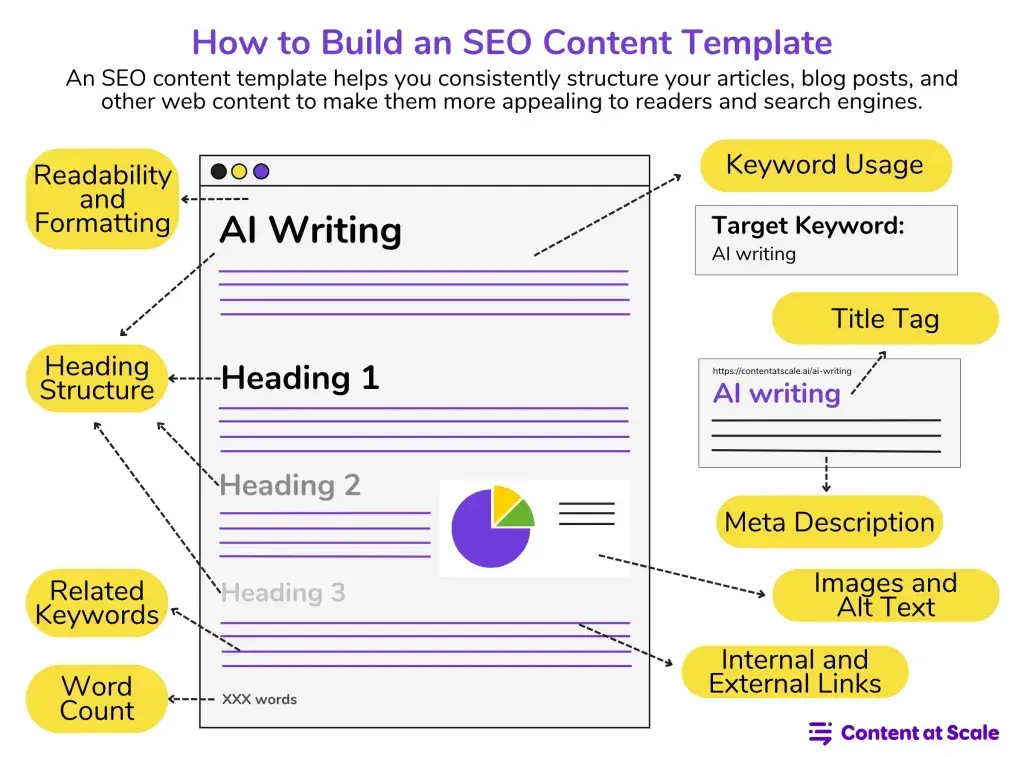
Image Source
51. Priority of the page in the sitemap.xml: Assigning a priority level to the web page in the sitemap.xml file to guide search engine crawlers.
52. UX signal from pages ranking for the same keyword: User experience metrics from other pages ranking for the same keyword that influence search engine rankings.
53. Citing references and sources: Including citations and references to support the content’s credibility and reliability.
54. Use of a user-friendly layout: Designing the web page layout to be easy to navigate and visually appealing.
55. URL string in Google search engine results: How the URL appears in Google search results, affecting click-through rates.
56. Internal link anchor text to the page: The clickable text of internal links pointing to the web page, ideally containing relevant keywords.
57. Use of structured data: Implementing structured data (schema markup) to help search engines understand the content and context of the web page.
Site-level Factors
Site-level factors go above the page level and take a look at things on the entire site. They include the following.
1. Presence of a “contact us” page or appropriate amount of contact information: Including a dedicated page or section with ways to contact the business enhances credibility.
2. Content on site provides value or new insights: Creating content that is informative, useful, or offers fresh perspectives to users.
3. TrustRank: A metric that measures how closely linked your site is to trusted and authoritative sites.
4. Website updates for freshness factor: Regularly updating the content on the site to keep it current and relevant.
5. Site architecture: The structure and organization of the website’s pages and links.
6. Presence of a sitemap: Having a sitemap.xml file helps search engines crawl and index the site more efficiently. Find out what a sitemap is and how to create it.
7. Long-term site downtime: Prolonged periods when the website is unavailable, negatively impacting user experience and SEO.
8. Location of server: The physical location of the server hosting the website, which can affect loading speed and search rankings.
9. HTTPs/use of a valid SSL certificate: Using HTTPS to secure the website, which helps protect user data and can improve search rankings.
10. Presence of legal pages (terms and conditions and privacy policy): Including legal information pages that enhance trust and comply with regulations.
11. Unique metadata: Ensuring each page has distinct meta titles and descriptions to avoid duplication and improve SEO.
12. Use of breadcrumb markup: Implementing breadcrumb navigation to help users and search engines understand the site structure. Here are some great examples of breadcrumbs done well.
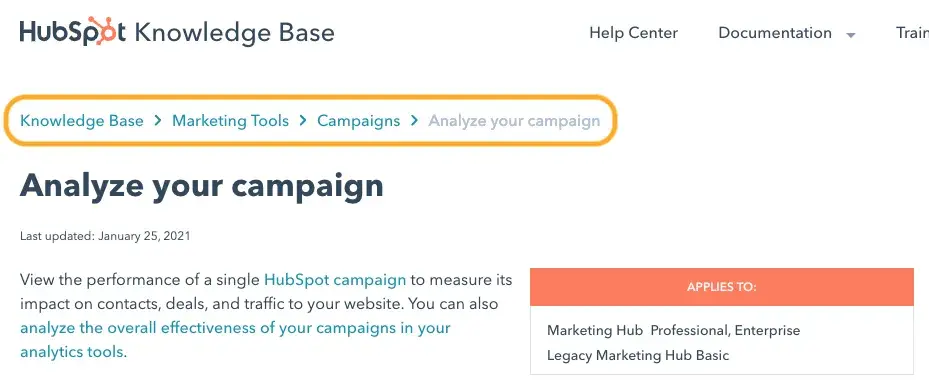
Image Source
13. Sitewide mobile optimization: Ensuring the entire website is optimized for mobile devices.
14. Sitewide user-friendliness (usability and interactiveness): Designing the website to be easy to use and interactive across all pages.
15. Bounce rate: The percentage of visitors who leave the site after viewing only one page, indicating user engagement levels.
16. User reviews: Feedback from users about the site or business, influencing reputation and trust.
17. Site reputation: The overall perception and credibility of the site based on user feedback, reviews, and trust signals.
Backlink Factors
Backlink factors look at the sites that are linking to you to determine where to rank your page. Sites with better quality sites linking to them tend to be higher in rankings when they have quality content. The backlink factors are as follows.
1. Age of linking domain: How long the domain linking to your site has been registered.
2. Number of referring domains: The total count of unique domains that link to your site.
3. Number of links from separate C-class IPs: The number of backlinks coming from different C-class IP addresses, indicating link diversity.
4. Number of referring pages: The total count of individual pages that link to your site.
5. Anchor text of backlinks: The clickable text in a hyperlink pointing to your site. You can overdo this with “exact match anchors,” so always try to be natural. There’s a free lesson on building backlinks here.
6. ALT tag of image links: The ALT text used in image links that point to your site describes the image content.
7. Number of links from .edu and .gov domains: The count of backlinks from educational and government domains.
8. Trust factor of the linking page: The credibility and trustworthiness of the page linking to your site.
9. Trust factor of the linking domain: The credibility and trustworthiness of the domain linking to your site.
10. Presence of links from competitors: Links coming from competitor websites.
11. Number of links from expected sites in your industry: Backlinks from sites that are relevant and expected within your industry.
12. Links from bad neighborhoods: Links from websites known for spam or low-quality content.
13. Number of links that are not from ads: The count of backlinks that are not paid advertisements.
14. Country TLD of referring domains: The country-specific top-level domain (TLD) of sites linking to you, indicating geographic relevance.
15. Presence of some nofollow links: Having backlinks with the “nofollow” attribute, indicating a natural link profile. When it comes to backlinks, I’d worry less about dofollow or nofollow and focus on relevancy instead. Here’s a guide on how to obtain great backlinks.
16. Diversity of link profile: A varied mix of backlinks from different types of sites and sources.
17. Context of the content of the linking page: The relevance and quality of the content on the page linking to your site.
18. Presence of more follow links than sponsored or UGC: Having more standard (follow) links compared to sponsored or user-generated content (UGC) links.
19. Lots of backlinks to URLs with 301 redirects: Many backlinks pointing to URLs that have been redirected using a 301 redirect.
20. The text that appears when you hover over a link: The title attribute text that shows up when you hover over a hyperlink.
21. Link location on page: The specific area on the page where the link is placed, such as the header, footer, or content body.
22. Location of link in content: Where the link appears within the content, such as within the main text or a sidebar.
23. Links from relevant domains: Backlinks from domains that are related to your site’s topic or industry.
24. Links from relevant pages: Backlinks from individual pages that are contextually related to your site’s content.
25. Presence of your page’s keyword in the title of the linking page: The linking page’s title contains your target keyword.
26. Natural rate of growth in the number of links: A steady and organic increase in the number of backlinks over time.
27. Spiky and unnatural rate of growth in the number of links: Sudden, unnatural surges in the number of backlinks, which may look suspicious.
28. Links from top resources on a certain topic or hubs: Backlinks from authoritative and central sites in a specific topic area.
29. Number of links from sites that are considered authority sites: The count of backlinks from well-established and respected sites.
30. Linked as a source in a Wikipedia article: Your site is cited as a reference in Wikipedia entries.
31. Words around your backlinks: The surrounding text near your backlinks, providing context and relevance.
32. Backlink age: How long the backlink has been pointing to your site.
33. Links from real sites vs. fake blogs: Distinguishing backlinks from legitimate sites compared to spammy or fake blogs.
34. Natural link profile: A backlink profile that appears organic and includes a variety of link types and sources.
35. Excessive reciprocal links: Having too many mutual backlinks between two websites, which can be seen as manipulative.
36. Links in real content vs. UGC: Backlinks within original content compared to UGC, like comments or forum posts.
37. Backlinks from a page with a 301 redirect: Links coming from pages that have been permanently redirected to a new URL.
38. TrustRank of linking site: The overall trustworthiness and authority of the site linking to your page.
39. Fewer outbound links on the linking page: Pages linking to your site have a limited number of outbound links, which can indicate higher link value.
40. Links in real content vs. links in forums: Backlinks within the main content of a page compared to those found in forum discussions.
41. Word count of linking content: The total number of words on the page that is linking to your site.
42. Quality of linking content: The overall relevance, usefulness, and credibility of the content that contains the backlink.
43. Sitewide links = one link: Links that appear on every page of a site (sitewide links) are generally counted as a single backlink for SEO purposes.
User Interaction
Google always emphasizes in its update announcements how important it is to provide an excellent user experience to website visitors. These factors measure user interaction to rank your page accordingly.
1. Organic click-through rate for exact keyword: The percentage of users who click on your page in search results specifically for the exact keyword you’re targeting.
2. Organic click-through rates for all ranking keywords: The average percentage of clicks your page receives for all the keywords it ranks for in search results.
3. Dwell time: The amount of time a user spends on your page before returning to the search results.
4. Bounce rate: The percentage of visitors who leave your site after viewing only one page, without interacting further.
5. Measurement of how users interact on your site based on RankBrain: How Google’s RankBrain algorithm interprets and reacts to user engagement and behavior on your site.
6. Total direct traffic: The number of visitors who come to your site by directly typing the URL into their browser or using a bookmark.
7. Percentage of repeat visitors: The proportion of visitors who return to your site more than once.
8. Blocked sites: Websites that are restricted or blocked by users, often due to security or privacy concerns.
9. Percentage of visitors that click on other pages on the SERP after visiting your page: The proportion of users who click on other search results after visiting your page.
10. Page frequently bookmarked by Chrome users: The number of times users save your page as a bookmark in Chrome.
11. Number of comments on page: The total count of user comments or interactions on your page.
Special Google Algorithm Rules
Some Google Algorithm rules are not directly connected to your page or domain. They include factors that look at personalizing search results for the user or better search results as a whole. Here are some of them.
1. Need for diversity in the SERP: The requirement for search engine results pages (SERPs) to show a variety of content types and sources.
2. Need for freshness in the SERP: The importance of displaying up-to-date and recent content in search results.
3. Browsing history of user: The record of websites and pages a user has visited, which can influence personalized search results.
4. Search history of user: The log of keywords and queries a user has previously searched for, affecting personalized search results.
5. Succinct answers, formatting, page authority, and HTTPS for featured snippets: The need for clear, well-formatted content on authoritative HTTPS pages to be selected as featured snippets.
6. Geo-targeting: Tailoring search results to a user’s geographic location.
7. Adult content or curse words (excluded from safe search results): The filtering out of explicit content or offensive language from safe search results.
8. High content quality standards for YMYL keywords: Ensuring high-quality, trustworthy content for “Your Money or Your Life” topics, which impact users’ health, finances, or safety.
9. Legitimate DMCA complaints: Valid requests for removal of copyrighted content, which can affect search visibility.
10. Need for domain diversity in SERP: The necessity for search results to include links from a variety of domains to provide balanced information.
11. Transactional searches: Queries with commercial intent, often aimed at making a purchase or completing a transaction. The SERPs look very different for transaction keywords; look at the example below, that’s a lot of shopping ads!
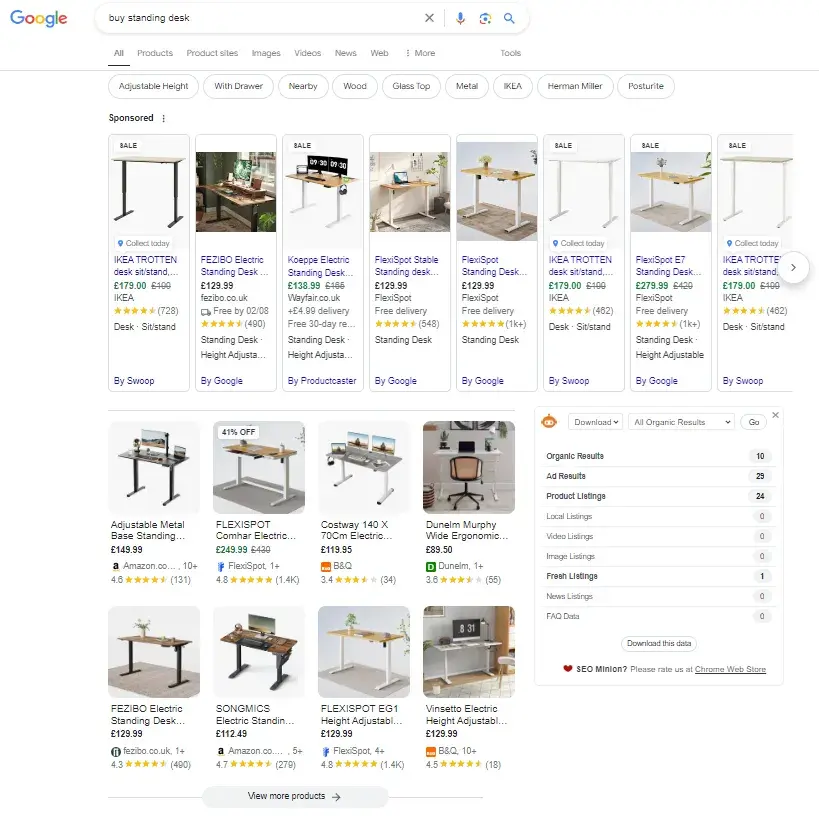
12. Local search results: Search results that are tailored to the user’s local area or geographic location.
13. Presence of news stories related to the keyword for the Top Stories box: The display of current news articles relevant to the search keyword in the Top Stories section
14. Search intent: The underlying goal or purpose behind a user’s search query, such as finding information, making a purchase, or solving a problem.
15. Presence of big brands with relevant content (they are often ranked higher): The tendency for well-known brands to rank higher in search results due to their authority and relevance.
16. Presence of results optimized for Google Shopping: The inclusion of product listings and ads from Google Shopping in search results for commercial queries.
17. Image results: Search results that include images related to the search query.
18. Branded search: Queries that include a specific brand name, often leading to results related to that brand.
19. Easter eggs and April Fools’ Day jokes and hoaxes from Google: Fun or playful surprises, like hidden features or jokes, created by Google, typically around April 1st.
20. Spammy queries: Search queries that are associated with low-quality or spammy content.
21. Spammy sites: Websites that engage in spammy practices, such as keyword stuffing or link schemes, which can negatively impact search results.
Brand Signals
How great is your branding strategy in terms of SEO? If you haven’t taken care of your brand mentions and brand all over the internet, you need to start now.
Because there are some serious ranking factors related to your brand, including the following.
1. Brand + keyword searches (for example, HubSpot SEO): Searches that combine a brand name with a specific keyword or topic.
2. Branded anchor text: Hyperlink text that includes the brand name, used in backlinks to enhance brand recognition.
3. X profiles with followers: An X account for a brand or individual that has a substantial number of followers, indicating social influence. I like to join entities like social media accounts to websites using schema and “sameAs.”
4. Official LinkedIn page: A LinkedIn profile for a brand or individual that serves as the official business presence on the platform.
5. Facebook page with lots of likes: A Facebook page for a brand or business that has a high number of likes, reflecting popularity and engagement.
6. Branded searches: Queries that specifically include the brand name, often indicating user intent to find information about the brand.
7. Known author or verified online profile: An author or individual with a recognized and verified online presence, adding credibility and authority.
8. Real social media accounts: Authentic and active social media profiles for a brand or individual, as opposed to fake or inactive ones.
9. Top stories with brand mentions: News stories or articles featured in search results that mention the brand.
10. Brand mentions without links: Instances where the brand is mentioned in content without a hyperlink pointing to the brand’s website.
11. Physical location of offices: The geographical locations of a brand’s physical offices or business premises, which can influence local search results and credibility.
On-site Web
To rank high on search engine results, you need to ensure your site isn‘t spammy and doesn’t look spammy — as with many things in life, looks play a role in how we’re perceived. Here are some factors around that.
1. Low-quality content: Content that is poorly written, not informative, or lacks value, often resulting in a poor user experience.
2. Links to bad neighborhoods: Backlinks pointing to or from low-quality, spammy, or irrelevant sites, which can harm SEO.
3. Multiple and sneaky redirects: Using excessive or deceptive redirects to manipulate search engine rankings or hide content.
4. Flagged server IP address: An IP address associated with spammy or malicious activity, which can impact search engine trust.
5. Distracting ads and popups: Advertisements and popups that interfere with the user experience and can detract from content readability.
6. Popups that are spammy and difficult to close: Popups that are intrusive, hard to dismiss, and often used for spammy or aggressive marketing.
7. Over-optimizing the site: Excessively applying SEO tactics, such as keyword stuffing or overusing meta tags, can negatively affect rankings.
8. Gibberish content: Content that is nonsensical or meaningless, often generated by automated tools without real value.
9. Use of doorway pages: Creating multiple low-quality pages designed solely to rank for specific keywords and redirect users to other sites.
10. Lots of ads above the fold and not much content: Having a significant amount of advertisements visible before the user scrolls, with minimal content, which can harm the user experience.
11. Hiding affiliate links: Concealing affiliate links to make them less noticeable or deceptive, which can be considered unethical and harmful to SEO.
12. Low-value content sites: Websites primarily filled with content that lacks substance or usefulness, often used for link building or ad revenue.
13. Affiliate sites: Websites focused mainly on promoting affiliate products, which can be seen as low-quality if they lack original content.
14. Keyword stuffing in meta tags: Overloading meta tags with keywords in an attempt to manipulate search rankings, which can be penalized by search engines. This feels very old hat now!
15. Computer-generated content: Content created by automated tools or algorithms without human oversight, often resulting in low quality or relevance.
16. Nofollowing all outbound links: Using the “nofollow” attribute on all external links, which can prevent passing link equity and diminish content value.
Off-site Webspam Factors
The off-site webspam factors affect spam based on what’s done outside your website that connects with your website. They include the following.
1. Unnatural and sudden increase in backlinks: A rapid and unusual surge in the number of backlinks, which may indicate manipulative SEO practices.
2. Hacked site: A website that has been compromised by malicious actors, often leading to security issues and a negative impact on search rankings.
3. Lots of low-quality backlinks: An abundance of backlinks from poor-quality or spammy sites, which can harm SEO.
4. High percentage of links from unrelated websites: A large portion of backlinks coming from sites that are not relevant to your content or industry.
5. Low-quality directory links: Backlinks from directories that are of low value or are poorly maintained, which can negatively impact SEO.
6. Automatic links in widgets: Backlinks generated automatically through widgets or plugins, which may be considered low-quality or manipulative.
7. Links from sites with the same server IP: Backlinks from multiple sites hosted on the same IP address, which can indicate link manipulation.
8. Using “poison” in your anchor text: Employing overly aggressive or irrelevant keywords in anchor text, which can lead to penalties.
9. Ignored manual actions in search console: Failing to address or rectify penalties or warnings issued by Google Search Console regarding manual actions.
10. Selling links: The practice of exchanging money for backlinks, which is against search engine guidelines and can lead to penalties.
11. Temporary link schemes: Short-term, link-building tactics designed to artificially boost rankings, often leading to negative consequences when discovered.
Phew, we made it! Even though this list might seem overwhelming, I’ve highlighted my top 10 to make things a bit more palatable.
Becoming an Ranking Factor Expert
You‘ve now gotten to know the many known ranking factors and my preferred top 10. Use this article as a guide, not as a hard rule.
I’m not Google and only Google can confirm what the exact ranking factors are. Most of this data is from what I have seen from working with several websites over the years.
One important thing to note: don‘t overdo it — this serves as a reminder that you must prioritize optimizing for humans, not the algorithm.
When you over-optimize your pages, Google sees that you’re trying too hard and might believe you are trying to game the system.
Remember, user experience is key, so continually optimize for your target audience, and you will be duly rewarded.
Editor’s note: This post was originally published in July 2021 and has been updated for comprehensiveness.
![]()
If Hubspot is of interest and you'd like more information, please do make contact or take a look in more detail here.
Credit: Original article published here.
